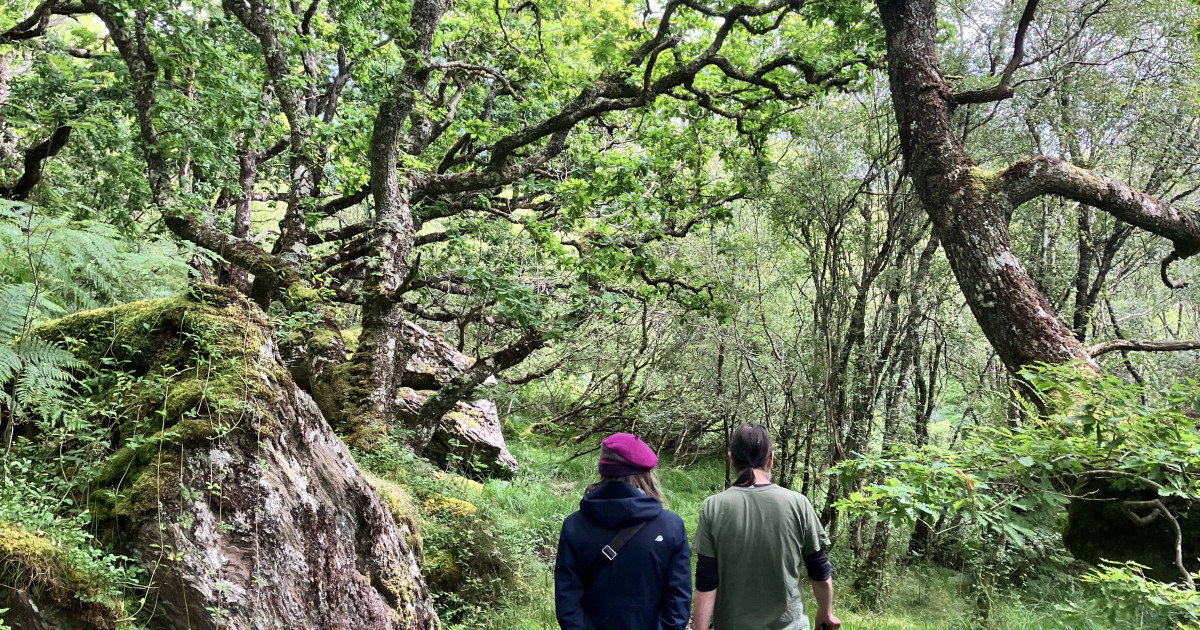Amid the climate storm we must act to save our pinewoods and forests
I was proud to lead a debate celebrating Scotland's national native woodlands, one that led to positive contributions from across the chamber. This is why.

We’ve just faced two severe storms that wreaked havoc on transport and business and even took human lives. These were not the first like this and will certainly not be the last.
So we should remember that healthy native woodlands help protect us from extreme weather events like this, by protecting soils from erosion and communities from flooding.
Native woodland restoration is not a ‘nice to have’, it’s an essential part of the response to the climate emergency that is playing out in front of our eyes right now.
This debate marks the 10th anniversary of the Scots pine becoming our country's national tree.
This was announced at a Parliamentary reception on 29th January 2014, following a nationwide consultation in which thousands of Scots backed our native pine for this honour.
This tree is a symbol of Scotland, with a rich and storied history.
Pine candles were used in wedding rituals in fishing communities, believed to bring prosperity and luck.
In Orkney people would circle a pine candle three times around a mother and her newborn child.
Scots Pines mark the burial places of warriors, heroes and chieftains.
And when wearing tartan was outlawed after the Jacobite Uprising, the MacGregor clan wore the Scots pine as their plant badge in a gesture of defiance.
As the largest and longest-lived tree in the Caledonian Forest, Scots pine is a symbol of durability, as in the Gaelic proverb:
“Cruaidh mar am fraoch, buan mar an giuthas”
“Hard as the heather, lasting as the pine.”
But now, Caledonian pinewoods cover less than 2% of their original area in Scotland, and scientists say that many of these remnants may not survive without urgent action.
Turning to Scotland’s rainforest, the situation is similar.
This beautiful ecosystem that survives in stretches along the west coast and on the inner isles covers less than a fifth of its former area.
Both types of native woodland support a wealth of biodiversity and can help reduce the impacts of climate change.
Globally, Scotland is one of the last bastions for these important habitats, so we have a special responsibility to protect and restore them.
Fortunately, many community groups and third sector organisations are making a valiant effort to do just that.
Early on as an MSP I visited Arkaig Community Forest, which boasts both Caledonian Pinewoods AND temperate rainforest. I was so impressed by the multifaceted projects including a native tree nursery, a community venison project and a Forest School.
More recently, their young Chairperson Liam McLoone wrote to me, explaining how the woods are “bursting with opportunities”, in his own words.
He said:
“We regularly visit our woods, both individually and as a community, to experience the wildlife within and connect with our heritage.
Our woods also contribute towards our community in the form of timber production, venison produce, craft materials, eco-tourism and conservation jobs.
I got involved with our community wood to learn more about the forest, and I'm proud now to be involved in the management and restoration of this iconic place.'
That demonstrates just how important people are to our native woodlands, and how important our native woodlands are to people.
But without increased efforts to save them, they could be lost forever.
A recent RSPB report found that 40% of our rainforest shows very high levels of grazing, mainly by deer, which prevents or limits its long-term survival.
Deer also pose a serious threat to Scots pine, especially now that many of the fences built to protect these woods in the 1990s have fallen into disrepair.
I was heartened by the Cabinet Secretary for Rural Affairs’ commitment last year that by 2026 we will have “Taken steps to further protect and restore our iconic Atlantic rainforests and ancient Caledonian pinewoods.”
I know that the groups and organisations I have mentioned would like those steps to include exploring:
- new technologies such as drone and thermal surveys;
- developing a community-based approach to deer stalking;
- and adding deer management as a cross-compliance condition for farm support.
Landscape-scale deer management is the all-important tool in the woodland recovery toolbox.
In Strathspey and upper Deeside, land managers worked together on deer management across the landscape, allowing the Pinewoods to recover without the need for fences to remain in place.
That’s why it’s so welcome that the Minister for Biodiversity is consulting on modernising deer management for climate and nature,
And that the Agriculture Bill creates powers to support co-operation between people working in rural areas.
If we all work together, across different locations, vocations and policy spheres, we can save our globally important, locally precious native woodlands, so they can endure for centuries more - and create livelihoods that keep people in our straths and glens.
- With special thanks to Trees for Life, Woodland Trust, Plantlife, Arkaig Community Forest , The Langholm Initiative, Highland Perthshire Communities Land Trust, Argyll & the Isles Coast and Communities Trust, and Community Woodlands Association.